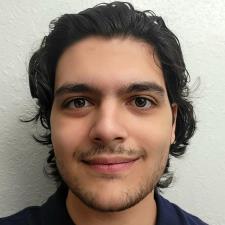
Clayton S. answered • 10/16/23
Cum Laude Microbiology and Cell Science Graduate; USF Medical Student
Hi Lillian!
Oxidative Phosphorylation can be complicated, but let me present a brief overview. You may know the bulk processes of oxidative phosphorylation by another name: the electron transport chain. Glycolysis and the Citric Acid Cycle produce the reduced intermediates NADH and FADH2 from NAD+ and FADH during certain enzymatic reactions in their pathways. These molecules can be thought of as "electron carriers," and the energy these molecules carry can be converted into ATP using the electron transport chain.
The electron transport chain is a set of membrane-embedded proteins and organic compounds that are grouped into complexes. There are 4 complexes, creatively named I, II, III, and IV. In eukaryotes, they are present on the inner mitochondrial membrane. In prokaryotes, they are present on the cell membrane (since they don't have mitochondria). By reacting with these complexes (which I won't get into the specifics of here), NADH and FADH2 become NAD+ and FADH again to be reused in Glycolysis and the Citric Acid Cycle. Meanwhile their H+ ions are shunted into the intermembrane space.
So a whole lot of H+ ions are forced into this space by the electron transport chain, and there is only one channel to get back: ATP synthase. ATP synthase is another membrane-spanning protein. It's a lot like a hydroelectric turbine, but instead of water, it is turned by H+ ions as they flow back to the mitochondrial matrix (or cytoplasm in prokaryotes). As ATP synthase is turned, it catalyzes the addition of phosphate to ADP, creating ATP and water. This process is an example of chemiosmosis. So electron transport chain plus chemiosmosis through ATP synthase = oxidative phosphorylation. It produces a far greater amount of ATP than glycolysis and the citric acid cycle. Glycolysis makes 2 ATP, the citric acid cycle makes 2 ATP, and oxidative phosphorylation makes 26-28 ATP for a total yield from a single glucose molecule of 30-32 ATP.




